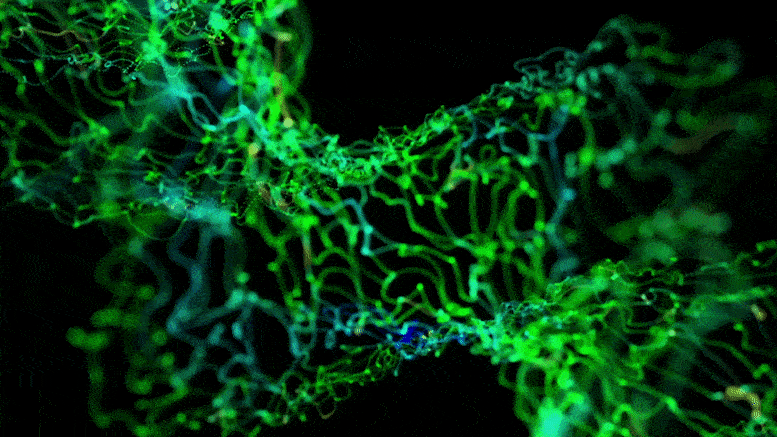
A new theory suggests that a novel molecular species composed of RNA and peptides initiated the evolution of life into more complex forms.
According to a new theory by LMU chemists led by Thomas Carell, it was a novel molecular species composed of RNA and peptides that set in motion the evolution of life into more complex forms.
Investigating how life may have emerged so long ago on the early Earth is one of science’s most fascinating challenges. Which conditions must have prevailed for the fundamental building blocks of more complex life to form? One of the main answers is based upon the so-called RNA world concept, which was formulated by molecular biology pioneer Walter Gilbert in 1986. According to the hypothesis, nucleotides — the fundamental building blocks of the nucleic acids A, C, G, and U – arose from the primordial soup, and short RNA molecules were produced from the nucleotides. These so-called oligonucleotides were already capable of encoding small amounts of genetic information.
As such single-stranded RNA molecules could also combine into double strands, however, this gave rise to the theoretical prospect that the molecules could replicate themselves – i.e. reproduce. Only two nucleotides fit together in each case, meaning that one strand is the exact counterpart of another and thus forms the template for another strand.
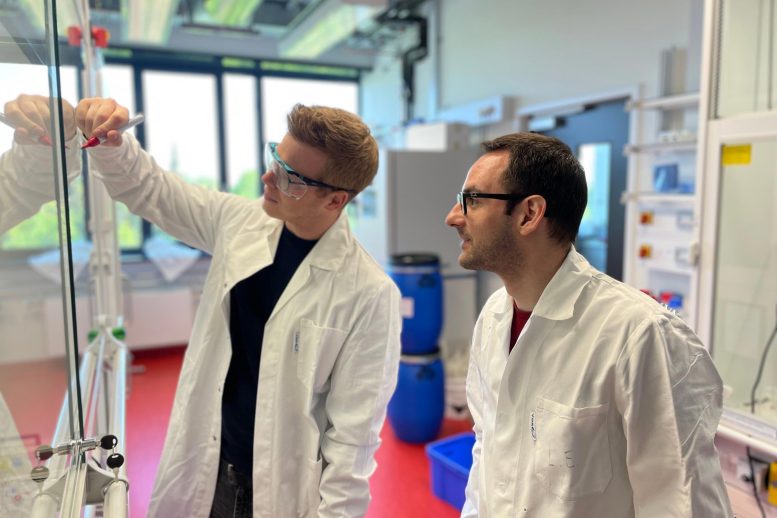
Ludwig Maximilian University of Munich chemists Felix Müller (left) and Luis Escobar discussing a new prebiotic molecular design. Credit: © Markus Müller / LMU
In the course of evolution, this replication could have improved and at some point yielded more complex life. “The RNA world idea has the big advantage that it sketches out a pathway whereby complex biomolecules such as nucleic acids with optimized catalytic and, at the same time, information-coding properties can emerge,” says Ludwig Maximilian University of Munich (LMU) chemist Thomas Carell. Genetic material, as we understand it today, is made up of double strands of DNA, a slightly modified, durable form of macromolecule composed of nucleotides.
However, the hypothesis is not without its issues. For example, RNS is a very fragile molecule, especially when it gets longer. Furthermore, it is not clear how the linking of RNA molecules with the world of proteins could have come about, for which the genetic material, as we know, supplies the blueprints. As laid out in a new paper published in Nature, Carell’s working group has discovered a way in which this linking could have occurred.
To understand, we must take another, closer look at RNA. In itself, RNA is a complicated macromolecule. In addition to the four canonical bases A, C, G, and U, which encode genetic information, it also contains non-canonical bases, some of which have very unusual structures. These non-information-coding nucleotides are very important for the functioning of RNA molecules. We currently have knowledge of more than 120 such modified RNA nucleosides, which nature incorporates into RNA molecules. It is highly probable that they are relics of the former RNA world.
The Carell group has now discovered that these non-canonical nucleosides are the key ingredient, as it were, that allows the RNA world to link up with the world of proteins. Some of these molecular fossils can, when located in RNA, “adorn” themselves with individual amino acids or even small chains of them (peptides), according to Carell. This results in small chimeric RNA-peptide structures when amino acids or peptides happen to be present in a solution simultaneously alongside the RNA. In such structures, the amino acids and peptides linked to the RNA then even react with each other to form ever larger and more complex peptides. “In this way, we created RNA-peptide particles in the lab that could encode genetic information and even formed lengthening peptides,” says Carell.
“It’s possible that there never was a pure RNA world, but that RNA and peptides co-existed from the beginning in a common molecule.”
— Prof. Thomas Carell
The ancient fossil nucleosides are therefore somewhat akin to nuclei in RNA, forming a core upon which long peptide chains can grow. On some strands of RNA, the peptides were even growing at several points. “That was a very surprising discovery,” says Carell. “It’s possible that there never was a pure RNA world, but that RNA and peptides co-existed from the beginning in a common molecule.” As such, we should expand the concept of an RNA world to that of an RNA-peptide world. The peptides and the RNA mutually supported each other in their evolution, the new idea proposes.
According to the new theory, a decisive element at the beginning was the presence of RNA molecules that could adorn themselves with amino acids and peptides and so join them into larger peptide structures. “RNA developed slowly into a constantly improving amino acid linking catalyst,” says Carell. This relationship between RNA and peptides or proteins has remained to this day. The most important RNA catalyst is the ribosome, which still links amino acids into long peptide chains today. One of the most complicated RNA machines, it is responsible in every cell for translating genetic information into functional proteins. “The RNA-peptide world thus solves the chicken-and-egg problem,” says Carell. “The new idea creates a foundation upon which the origin of life gradually becomes explicable.”
Reference: “A prebiotically plausible scenario of an RNA–peptide world” by Felix Müller, Luis Escobar, Felix Xu, Ewa Węgrzyn, Milda Nainytė, Tynchtyk Amatov, Chun‐Yin Chan, Alexander Pichler and Thomas Carell, 11 May 2022, Nature.
DOI: 10.1038/s41586-022-04676-3

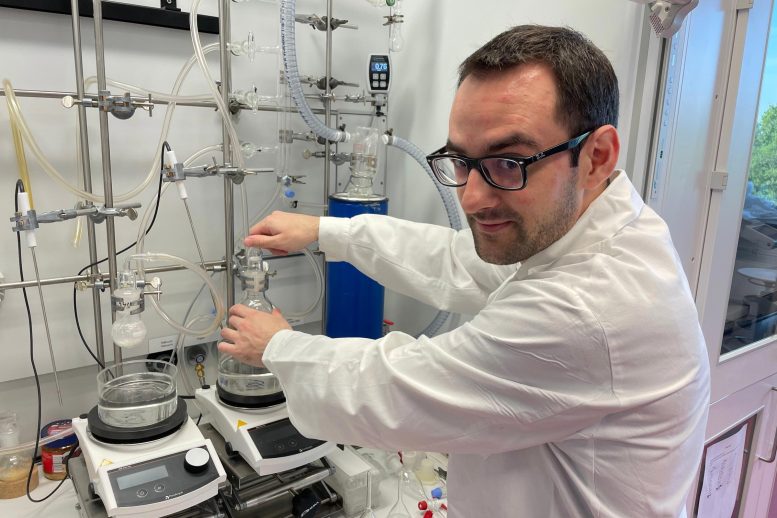

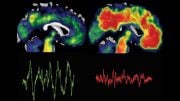
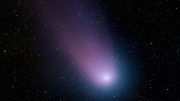

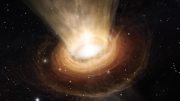
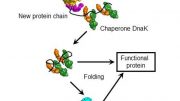

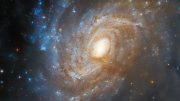
You’re writing about a theory first proposed in 1987 pretending it’s now “news”?
Only in America.
Here we go again want to talk about how life originated on Earth but not how the information got there expecting many people to just believe information just appears out of nowhere and that is beyond the imagination
The depths the secular scientific community goes to deny the Creator is past being amusing. Darwinian Evolution is a farce. Naturalism dismisses Rationality and therefore, should be dismissed as a logical worldview based on the fact that we can rationalize reasons for believing in Naturalism. Get a clue!
… I bet there are some quantum effects enabling that to happened, but why it is not happening again?
Is it because it was just one time event. Now, if somebody does make experiment like that, then the experiment would not be acceptable because it is not possible to repeat it… but life goes on…
Once upon a time……And they lived happily ever after.
Darwin instructed that a new theory of life must be persued should there be any evidence that discredit his theory on life. I personally believe we have passed that point of understanding of how mind-blowing complex the order of life is. We must now do as Darwin instructed his followers to do. Find a new theory of the Origins life. Every new discovery in biology affirms that life couldn’t possibly came by by chance. Never mind the complexity of living organisms, their beauty, and their perfection in managing complex systems, from deserts to rainforests. Any person with some common sense can see that evolution alone is impossible.
Some very dumb comments…who created the creator?
Oh, that’s EASY.
There was some water, see? And some dirt, See? And the Sun shone. Right? And something happened. And happened again. And again and again and again. And again. And that’s your explanation.
Happy?
In the end, all will realize that God make this world and it is no science in this. Science could not explain how, why, in which way the earth was created.
Funny, these creationists forget how their theories are delusional. Yes, god did it. How convenient.
It is a theory not fact
It’s interesting how people keep ‘discovering’ things I assumed were common knowledge 40 years ago. Full disclosure : I’m 59.
Yes. In fact. ALL the necessary amino acids have been found in meteorites. That means ALL the building blocks of life are ubiquitous. Throughout the universe. And they self assemble. All they need is a chance.